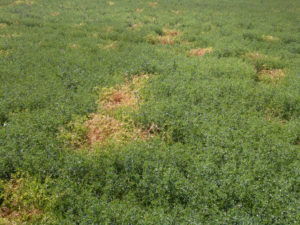Lentil – Foliar Diseases
Ascochyta/Mycosphaerella Blight |
|
CAUSED BY |
|
Symptoms |
|
PREVENTION AND CONTROL |
|
IMPACT |
|
Sclerotinia Stem or Pod Rot (White Mould)
|
|
CAUSED BY |
|
SYMPTOMS |
|
PREVENTION AND CONTROL |
|
IMPACT |
|
Botrytis (Grey Mould) |
|
CAUSED BY |
|
SYMPTOMS |
|
PREVENTION AND CONTROL |
|
IMPACT |
|
OTHER CAUSES:
These aren’t considered to be a disease, but can be confused with diseases.
Heat Canker |
|
CAUSED BY |
|
SYMPTOMS |
|
PREVENTION AND CONTROL |
|
Special thanks to Saskatchewan Pulse Growers and Manitoba Pulse and Soybean Growers.


